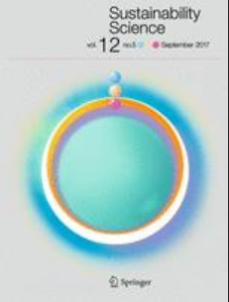
Abstract
In the global map of environmental injustices (http://www.ejatlas.com), the Andean countries (AC) report many ecological distribution conflicts. Our hypothesis is that the patterns of such conflicts are explained by the structural shifts of the economies and the concomitant changes in their metabolic profiles. Since the 1990s, these countries went through a strong reprimarization process, which changed their social metabolism as well as intensified environmental pressures and conflicts. In monetary terms, in the AC group of countries (Colombia, Ecuador, Peru and Bolivia), the primary sector increased its importance both in exports as well as in GDP. In the metabolic dynamics, the Domestic Extraction of materials (measured in tons) increased by a factor of 3.4 after jumping from 336 to 1145 MT between 1970 and 2012. This was driven by the fossil fuel and mining sectors. This reality was reflected in the environmental conflicts. Mining, fossil fuels, biomass and hydropower plants are the most conflictive sectors. The research in this article relies on a study of material flow analysis for the four AC carried out by the authors as well as 244 environmental conflicts reported in the EJAtlas until August 2016. The shifts in the metabolic–economic patterns help explain the dynamics and characteristics of the environmental conflicts in the AC. Such conflicts produce social mobilizations, which if successful, might help move society towards sustainability and environmental equity.
Link
https://link.springer.com/article/10.1007/s11625-017-0510-9
mario.perez@correounivalle.edu.co
Keywords
Environmental conflicts, Environmental justice, Neo-extractivism, Andean countries, Social metabolism, Material flow analysis
How to Cite
Pérez-Rincón, M., Vargas-Morales, J. & Crespo-Marín, Z. Sustain Sci (2017). https://doi.org/10.1007/s11625-017-0510-9

The project ENVJUSTICE has received funding from the European Research Council (ERC) under the European Union’s Horizon 2020 research and innovation programme (grant agreement No. 695446)